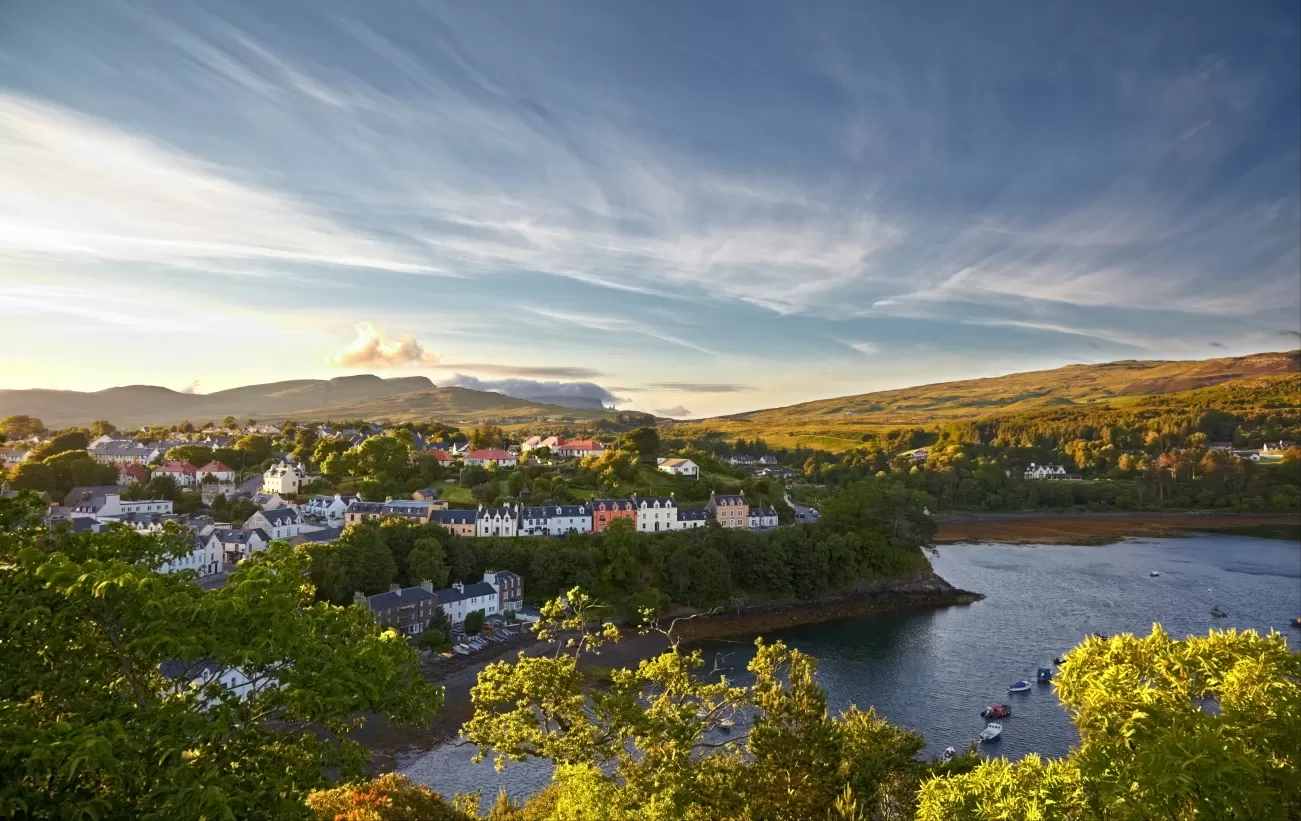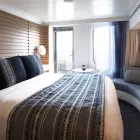Discover Lewis, the largest island of the Hebrides, considered to be the cradle of Gaelic culture. Here, the peat- and heather-covered valleys and lochs stretch onto infinity, and numerous bird colonies have taken up residence in the long, jagged coastlines. Not far from Stornoway, the island’s main town, built by the Vikings in the 9th century, stands one of Scotland’s most prominent prehistoric sites: the Standing Stones of Callanish. Dating back to more than 3,000 years B.C., these imposing stones placed in a cruciform pattern were laid out according to the moon and stars, and their main purpose was to keep track of seasonal cycles, as this was essential for farmers at the time.
Included Excursions:
Historic Lewis: Departing from Stornoway, drive along the beautiful Atlantic coastal road. Arrive at Gearrannan, a reconstructed settlement of traditional blackhouses where folk lived together with their animals. The houses were made using dry stone masonry and had thatched roofs, distinctively weighted down with rocks. Visit the small museum, enjoy a display of a typical crofting activity such as weaving or butter-making and take in the views at this dramatic site on the wild Atlantic coast. Continue your panoramic drive and reach Dun Carloway Pictish Broch, probably constructed about 200 BC. Broch-building ceased around AD 100, but they may have continued in use. Evidence from excavations suggests Dun Carloway may have been used until about AD 1000. It’s also said to have been used as a stronghold by members of the Morrison Clan during the 1500s. Please note that the roads on this tour are very twisty and may not be suitable for passengers who are prone to travel sickness. This excursion involves walking on uneven grounds, and steps. It is recommended you wear comfortable walking shoes and a raincoat. Bring water from the ship.
Discover Harris Tweed: Harris Tweed tells the story of the rich history, culture, beautiful landscape, and vibrant communities in the remote Outer Hebrides. Start your tour by visiting Carloway Mill, one of only three working Harris Tweed textile mills in the world producing the renowned Harris Tweed fabric. Enjoy a guided tour that will take you through the process of creating tweed on the original Victorian machinery and see the process from the raw material to the finished product. The workers at the mill are passionate and knowledgeable and will offer a real insight into how the fabric is made. Then, you will be transferred to the nearby Gearrannan Blackhouse Village. In this re-created traditional village you will experience the way of life in a typical crofting township and see traditional activities, including the weaving of the famous Harris Tweed. Finally, enjoy a scenic drive back to Stornoway, passing the famous Callanish Standing Stones, and stop in the island's capital where you can either visit the Harris Tweed exhibition in the Town Hall to learn more about the product or perhaps purchase your own in one of the many harbourside shops. This excursion involves walking on mostly flat ground and uneven terrain. It is recommended you wear comfortable walking shoes and a raincoat.
Explore Bostadh: Take a journey back in time on the Isle of Great Bernera with a visit to Bostadh, a charming hamlet dating from the Late Iron Age. From the moment you set foot on the island, you will be immediately struck by the beauty of its wild landscapes and its villages that seem suspended in time. You will set off to explore Bostadh. This settlement established 1,500 years ago is a fascinating testament to Scotland’s Iron Age. On the way, you will see fishing villages and the stone dykes that are characteristic of the island’s landscape. Finally, you will arrive at the stunning beach at Bostadh, where you can take in the breathtaking panorama before visiting a reconstructed roundhouse, a typical example of an Iron Age dwelling. Your excursion continues with a visit to Breacleit, a picturesque village home to a small museum documenting the island's history and heritage and a church with spectacular views over the loch. As this excursion involves some walking, it is recommended to wear comfortable walking shoes. Access to the Iron Age house is via uneven steps, making this excursion unsuitable for anyone with reduced mobility.
Essential of Lewis





























